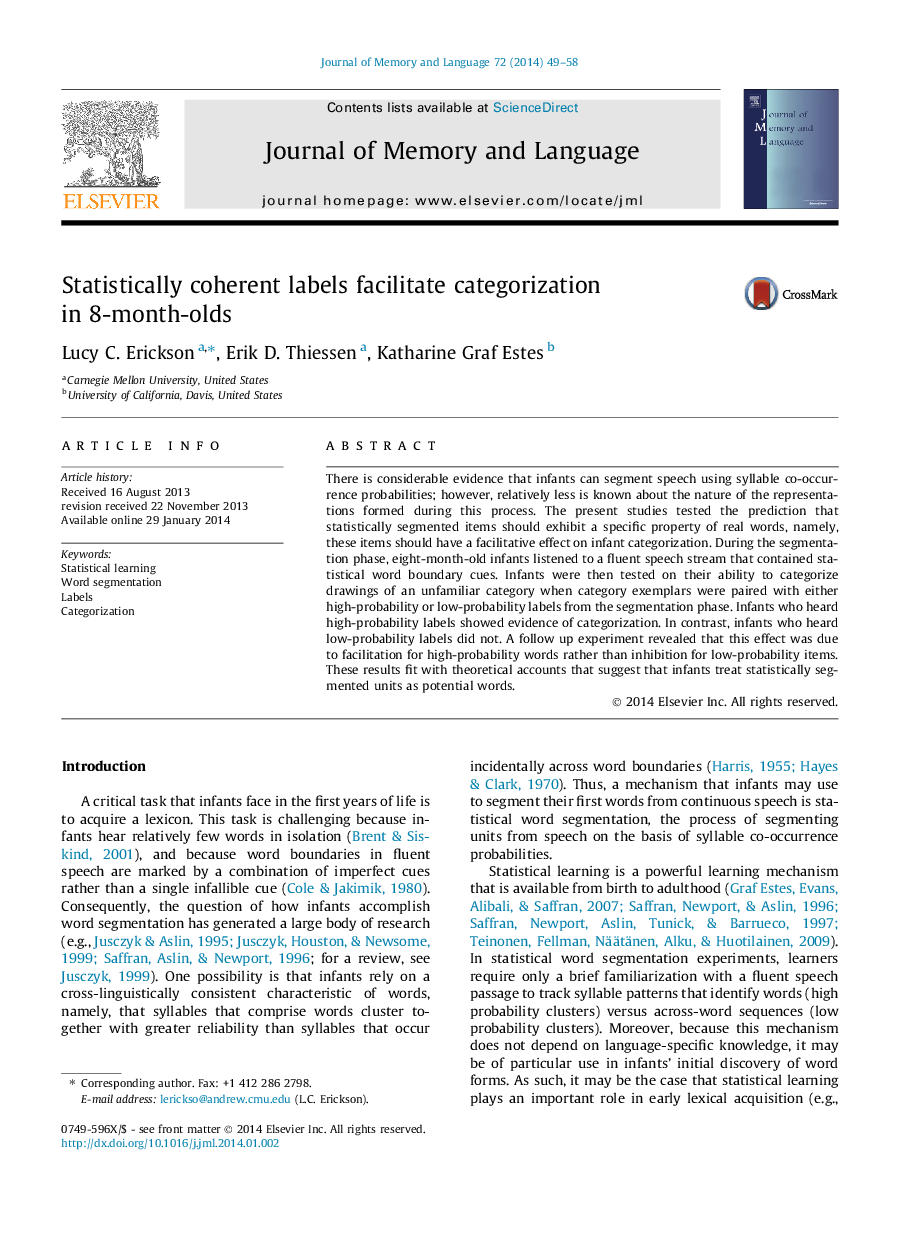| Article ID | Journal | Published Year | Pages | File Type |
|---|---|---|---|---|
| 931878 | Journal of Memory and Language | 2014 | 10 Pages |
•8-month-olds categorize in the presence of statistically coherent labels.•8-month-olds fail to categorize in the presence of statistically incoherent labels.•Categorization success is due to facilitation for statistically coherent labels.•Statistical learning produces word-like representations.
There is considerable evidence that infants can segment speech using syllable co-occurrence probabilities; however, relatively less is known about the nature of the representations formed during this process. The present studies tested the prediction that statistically segmented items should exhibit a specific property of real words, namely, these items should have a facilitative effect on infant categorization. During the segmentation phase, eight-month-old infants listened to a fluent speech stream that contained statistical word boundary cues. Infants were then tested on their ability to categorize drawings of an unfamiliar category when category exemplars were paired with either high-probability or low-probability labels from the segmentation phase. Infants who heard high-probability labels showed evidence of categorization. In contrast, infants who heard low-probability labels did not. A follow up experiment revealed that this effect was due to facilitation for high-probability words rather than inhibition for low-probability items. These results fit with theoretical accounts that suggest that infants treat statistically segmented units as potential words.
